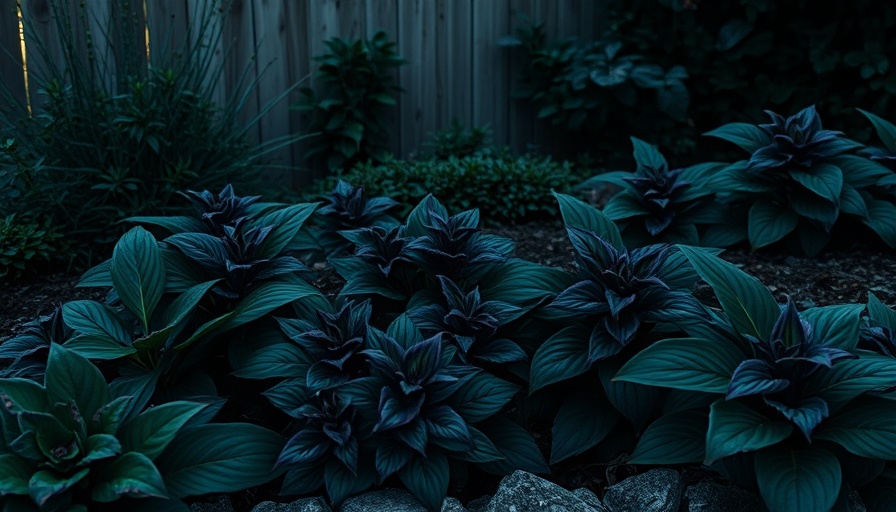
Embrace the Darkness: Exploring Goth Gardens
For many enthusiasts, the allure of gothic culture extends beyond music and fashion into the very fabrics of daily life. The goth garden is a compelling extension of this lifestyle, representing an intimate blend of aesthetics and personal expression. Its creation is rooted in a fusion of dark allure, moodiness, and intrigue – a stark contrast to conventional gardening themes. So what does it mean to cultivate a garden that thrives under the shadow of death, decay, and beauty? Let’s explore the elements that make a remarkable goth garden.
History and Evolution of Goth Culture in Gardening
The roots of goth culture stretch back to the post-punk musical movement of the late 1970s, where bands like The Cure and Bauhaus prevalent themes of melancholy and horror. This ethos evolved and has recently been witnessed in a resurgence of interest in androgynous aesthetics, dark literature, and now even gardening. With pop culture phenomena such as Netflix’s Wednesday and the ever-popular goth influencer community on TikTok and Instagram, gardens adorned with headstone plant markers and weeping angel statues now symbolize a year-round commitment to goth life.
A Garden Not Just for Halloween
The goth garden challenges the notion that outdoor decor belongs only to special occasions. Chloe Hurst, a prominent goth gardener whose work has captivated thousands on social media, emphasizes that her garden is a constant expression of her identity. As she says, “With every addition, the space transforms, becoming more hauntingly beautiful and immersive.” This transformation creates a space not only for cultivation but also for retreat and reflection.
Components of a Goth Garden
So, what exactly comprises a goth garden? Unlike traditional gardens which might boast greenery and brightness, goth gardens often incorporate dark-flowered plants, hardscaping elements like stone walls and wrought iron gates, and dramatic ornamental features that add to the atmosphere.
Sarah Browning, a community forester, notes that goth gardens maintain a sense of enclosure—emphasizing the moody and secretive vibe through strategic planting and layout. “Twisting paths and hidden corners enhance the enigmatic quality of the garden,” she explains. These areas can be accented with features such as fountains or sculpture—transforming mere plant growth into a gothic sanctuary.
Choosing the Right Plants
When selecting plants for your goth garden, consider those that bloom in dark hues or possess unusual forms. Recommendations include:
- Dark Opal Basil: With its rich purple and green leaves, this herb can complement both culinary delights and gothic aesthetics.
- Black Mamba Petunias: Their velvety, dark petals provide a refined elegance.
- Astilbe “Dark Side of the Moon”: Perfect for adding splashes of color amidst more somber greens.
These selections not only enhance the gothic theme but also create a visual narrative that draws the eyes through undulating pathways of beauty and mystery.
The Role of Hardscaping
Hardscaping is vital in establishing the ambiance of a goth garden. Incorporating elements like arched gates and stone arches can create separation within the garden, while paths can lead to secluded nooks perfect for reflection or an evening read. Consider vintage-style lanterns that not only illuminate but also enhance the gothic charm.
Experimenting with Lighting
Lighting is another crucial aspect of creating a goth garden. While traditional gardens might favor bright, sunny spots, goth gardens benefit from shadows and dim lighting. Solar-powered path lights, strategically placed around the garden, can ward off darkness without detracting from the atmosphere. Consider adding stained glass windows or candlelit fixtures to evoke a soft glow amidst the hauntingly beautiful flora.
Future Growth and Opportunities in Goth Gardening
Goth gardens are not a fleeting trend; they represent a sustainable movement where personal identity cultivates beauty in brooding environments rather than shying away from them. As new influences permeate our culture, the goth garden may evolve but its core of self-expression will remain intact. With support services like landscaping professionals emerging to assist in maintaining these unique collections, the goth gardening phenomenon shows no signs of fading.
Conclusion: Craft Your Own Goth Paradise
The goth garden is an invitation to try your hand at cultivating beauty tinged with shadows. By embracing the unconventional and incorporating your individual style into the gardening process, you can craft an enchanting outdoor realm that reflects the mysterious layers within us all. Gather ideas, choose your plants, and let the soil of your goth garden become a canvas for your personal artistry.
 Add Row
Add Row  Add
Add 


Write A Comment